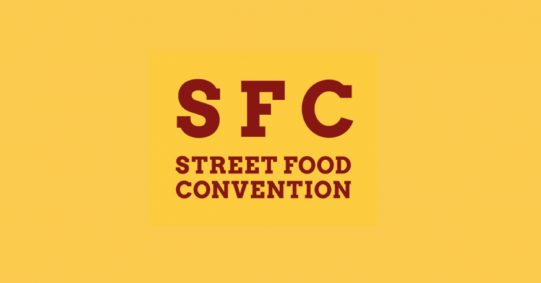18. Juli 2025
From the lab to the market: Julian Schildknecht on the mission of Microharvest
As researchers like Yuwares Malila underline that global demand for food is expected to nearly double by 2050. Alternative proteins (AP) have been proposed as a sustainable solution to provide food security as natural resources become more depleted. However, the growth and consumer intake of AP remains limited.
Ein Gastbeitrag von Franziska Raab
Research on alternative proteins aims to develop innovative, sustainable and healthy protein sources that are not derived from animals. These include plant, microbial and lab-grown options. Challenges include optimizing the processing steps from raw material to final product, as well as scaling production efficiently on a large scale. However, harnessing the potential of such technologies for food security requires the ability to translate them into commercial and scalable applications. In many cases, the first step of this translation is done by startups and/or university spins outs like Micorharvest.
Microharvest is a biotech company that develops alternative protein from natural bacteria. The Start-up was founded in 2021 and is based in Hamburg, Germany. They are pioneering better protein production through natural fermentation. Using microorganisms, nature’s most efficient protein factories, Microharvest aims to create sustainable protein at scale. Julian Schildknecht is the Head of Brand and Growth and he believes that their products have great potential, but they need to get the word out.
He is an expert on impact-driven B2B technology. Julian Schildknecht is dedicated to scaling European innovation to tackle pressing challenges such as climate change and sustainable supply. His work is guided by the belief that business can be a force for good.
Your technology enables the production of protein from raw materials within a single day. Can you give me an idea of how much protein is produced?
Schildknecht: We can produce one ton of protein per day with our partner in Europe. As you may have seen, otherwise I’d be happy to forward you the latest press release, we have now demonstrated that we can produce ten times that amount using a big bioreactor.
So the technology transfer, which is super critical for a lot of technology companies or startups, is to get something from small to pilot to full production scale. MicroHavest is now three years old and we are shipping first quantities, not saying that a tonne goes out every day, but we can produce that. Our goal is to produce 15,000 tonnes per year with our own production site, which we hope to open by the end of 2026. We have proven that it’s technically possible. Right now we’re shipping first quantities to customers to use our protein ingredients, for example for pet food applications like Vegdog. It’s not just about labs and scientists anymore. We are actively producing and going to the market, which is pretty amazing after three years.
Numerous factors are driving global macro trends towards the production of alternative proteins. These factors include population growth pressures, the environmental footprint of animal farming, the impacts of climate change, and a growing emphasis on ethical consumption. Let’s take a look at the future. Do you already know where you see yourself ten years from now?
Schildknecht: We have shown that we are quite good at meeting milestones. Let’s assume that roughly by the end of 2026 we have our blueprint factory, with 15,000 tons of output to serve the European market for pet food and aqua feed. We want to use this factory as a blueprint to also build other factories on every continent. If you really want to take sustainability seriously, you need to have local production.
It doesn’t make sense to produce in Asia to supply the US, right? In ten years, we want to have one factory on all continents supplying local markets. And it’s not just about pet food and aqua feed, it’s also about food. We will then be present with our protein ingredient in multiple food applications. We know that there will be significant protein gaps between what the world needs nutritionally and what current sources can provide. There’s a big gap because while our current methods might feed the world, but they’re not sustainable. We don’t have another planet to rely on. So I hope that in ten years from now we still have a reliable food system, and that we’re a part of it with our production sites on every continent.
What feedback have you received from customers who bought this pet food? Have there been any concerns, or what are their general thoughts?
Schildknecht: The truth is that we are only successful if our partners, such as manufacturers for aqua feed, pet food and food products, sell the products. We are well aware that this won’t be easy and requires education. On a positive note, fermentation as a technology and fermented food have a positive perception, so to speak.
The technology of fermentation doesn’t create a lot of skepticism, but rather more and more curiosity. So we work closely with our partner to see how we can build an honest and transparent narrative and educate people. For example, in pet food, our products allow claims of being vegan and planet friendly. We are also conducting more studies to support claims about gut health benefits. We have indicators, but we really want to have proof before we can make those claims. Our products have great potential, but we need to have education around that. One of our strains is already well known in the fermented food world, which helps. Certainly, new technologies like cultivated meat can cause hesitation, and we help to address this through education.
One of the big advantages we have naturally with our strains is that they have a very natural umami flavor. So, it tastes quite good, quite intense, a bit like barbecue style, I would say. So, for the dogs, they love it. Plant based options and insects, which are becoming more popular, face challenges with taste and nutritional value. Single cell protein offers both very good taste and high nutritional value, almost comparable to meat, but still vegan.
Can you imagine working with traditional dairy farmers? What would you say to those who are worried about losing their jobs if the demand for animal products declines?
Schildknecht: I believe the whole ecosystem needs to change, but there’s room for everyone to find new roles and new categories through collaboration. For us as a startup, I think it will be important to find a collaborative approach and work together with raw material suppliers and even farmers. And we need to collaborate within the ecosystem.
We need to collaborate with the governments in terms of regulation and with manufacturers to bring products to the market. So, I do feel shifts are necessary in order to create a sustainable food system. Collaboration in key. We’re open in all directions and actively seeking collaborators to make us stronger as a union.
What are the key points you focus on in your communication? How do you approach this, and what is your main message to customers?
Schildknecht: Since we’re living in a stakeholder economy, there are a lot of stakeholders that we need to communicate with. There are investors, talents, pet food manufacturers and there’s the public that also needs to know about us to create some demand. So, communication is key, and we are a startup with limited resources. Initially, our focus was finding investors supporting our mission. We communicated in trade press and events – everything to connect with investors.
In the second phase, we started this year to communicate a lot with our target groups in aqua feed and pet food. Communication works if the message you’re sending is quite specific and targeted towards the people you want to reach, right? We were successful in having a lot of potential customers in these industry verticals.
Now, the next phase is more about how we can build a communication that is reaching the general public. What we are thinking about is highlighting that everything we do is to feed the world. MicroHarvest is about proteins with the goal of providing a better solution than existing ones. Otherwise, we might lose the planet. Communicating this message effectively through the right media channels is a priority for us and we plan to intensify these efforts next year.
Can your proteins completely replace traditional animal products?
Schildknecht: No, and they shouldn’t. Let’s be realistic. It’s a personal choice, right? It’s incredibly difficult to convince people to stop doing something. Instead, I would always build a
narrative around working together for a better future. We are not against animal meat. It has a reason to stay. However, our excessive consumption carries a certain risk. Further expansion of animal production is unsustainable. While not all of us are vegans, we don’t advocate for eliminating meat entirely. Instead, we want to throw a better alternative into the mix of alternatives.
For example, what we are working on with our customers is to develop hybrid products to reduce meat content while maintaining nutritional value. It also greatly reduces the CO2 footprint per kilogram, as our footprint is 98% less than meat. Our ultimate goal is to reduce CO2 emissions and stay within planetary boundaries. I don’t believe we can completely stop meat consumption, but we can make meat products even better and create better alternatives. Then, these products also become interesting for people who aren’t vegan but want something that’s nutritious and tasty to enrich their diet.







